WHY
DEVELOPMENT PLANNING IS BROKEN: HR'S DIRTY LITTLE SECRET
 - Jamie Broughton, CEO, Avenue Careers
- Jamie Broughton, CEO, Avenue Careers
The Future of Upskilling and Employee Learning 2023


Future-proof your workforce through upskilling and reskilling
Sponsored by

MARCH 2023 • Vol.10 • No.03 Themed Edition on Employee Upskilling (ISSN 2564-2014)
Page 29 - 46
On the Cover
Straight Talk with HR.com
Why Development Planning Is
Little Secret
Here is a new, human-centered approach to employee learning and upskilling
- Jamie Broughton, CEO, Avenue Careers
23 The Future Of Upskilling Is Clear: Get Back To Soft-Skill Basics
Upskilling is shifting towards soft skills as employers prioritize interpersonal skills
- Karen Moore-Jackson, Executive Director of Recruitment, Graziadio School of Business
CEO,
Preparing organizations for the future of work
- Dr. Jonathan H. Westover, Chair and Associate Professor of Organizational Leadership, Woodbury School of Business
47 Micro-Credentials: Contributing To The Future Of Upskilling And Employee Learning
Taking advantage of new learning opportunities
- Kathryn Uhles, Dean, Arizona State University
55 What Your Employee Upskilling Plan Should Include And Why It Matters
Upskilling gives employees more growth opportunities, leading to higher retention and profitability
- Hannah Lloret, Vice President, Cyberbacker
57 Human Skills Are Your Workforce Superpower

Human skills increase hybrid work’s effectiveness
- Mike Howells, President of Workforce Skills, Pearson
61 How Do I Rate Myself As A Trainer In The Post-Pandemic Remote Workplace? Testing your behavior in fourteen areas
- Michael J. Provitera, Management Consultant, Associate Professor and Author, and Mostafa Sayyadi Ghasabeh, Management Consultant and Executive Coach
Future-proof your workforce through upskilling and reskilling
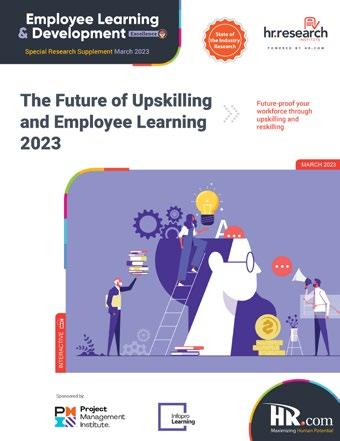
Employee Learning & Development Excellence MARCH 2023 Vol.10 No.03
Broken: HR's Dirty
07
INDEX Themed Edition on
(ISSN 2564-2014) Articles
Employee Upskilling
The Future of Upskilling and Employee Learning 2023
Page 29 - 46
Help
Be Better Prepared To Mitigate Future Skills Gap’ Exclusive
10 ‘Employee Upskilling Will
Organizations
interview with Vanessa Williams, Founder and
Leading Edge Consulting, LLC. 16 Futures Literacy: The Future Of Upskilling And Employee Learning
INDEX
“Upskilling” May Be Wasting Company Resources, And Humanity Is The Answer 4 skills we should develop to remain relevant
- Jim Frawley, CEO and Founder, Bellwether
How 11 Companies Are Building A Future-Ready Workforce
Effective tips about employee upskilling
- Brett Farmiloe, Founder and CEO, Terkel.io
How Employee Upskilling Gives Employers An Upper Hand Steps to improve the future of employee learning
 - Jason Richmond, CEO and Chief Culture Officer,
- Jason Richmond, CEO and Chief Culture Officer,
Ideal Outcomes, Inc.
Top Picks 14 19 26 52
The Future Of Upskilling And
Employee Learning
A few factors to consider when you begin re-skilling employees in 2023


 - Weronika Niemczyk, Chief People Officer, ABBYY
- Weronika Niemczyk, Chief People Officer, ABBYY
Editorial Purpose
Our mission is to promote personal and professional development based on constructive values, sound ethics, and timeless principles.
Excellence Publications
Debbie McGrath CEO, HR.com - Publisher
Sue Kelley Director (Product, Marketing, and Research)
Babitha Balakrishnan and Deepa Damodaran Excellence Publications Managers and Editors
Deepak S Senior - Design and Layout
Employee Learning & Development Excellence Team
Deepa Damodaran Editor

Nataraj Ramesh Design and Layout (Digital Magazine)
Chandra Shekar Magazine (Online Version)
Submissions & Correspondence
Please send any correspondence, articles, letters to the editor, and requests to reprint, republish, or excerpt articles to ePubEditors@hr.com
For customer service, or information on products and services, call 1-877-472-6648
Employee Upskilling: What HR Must Do to Build a Successful Future
Reskillingand upskilling serve to address and meet the needs of a company and maximize an employee’s potential at any given time.
As layoffs happen to the masses and talent retention continues to pose a challenge, the mutual benefits of reskilling or upskilling in the workplace make it more important now than ever before.
In this issue, you’ll find articles by some of the prominent human resources and learning and development (L&D) leaders. They’ll delve into topics ranging from the need for a human-centered approach to employee learning and upskilling, to the important factors organizations must consider during employee re-skilling, to the trends around employee learning and the rising importance of soft skills in the new world of work.
We’ll also look at ways in which new technologies are impacting the world of employee learning, and the ways that employers, and L&D leaders, are adapting to the changing reality.
"At the end of the day, what people really want at work is to have an impact while doing interesting, meaningful work with great people. That is about it. Instead, we make it complicated. We are usually talking with everyone about development plans, skills inventories, competency models and rating systems... language and processes that serve the organization, but not the human," notes Avenue Careers CEO Jamie Broughton.
Although much of this stuff is important, when it comes to mobilizing a workforce and getting them interested in taking ownership of their growth - we have taken the wrong approach, he further adds.
Check out Jamie’s article, Why Development Planning Is Broken: HR's Dirty Little Secret,
to understand what is lacking in the current employee learning and development programs and what HR must do to meet future demand.
Looking towards the future, there are four uniquely human skills we can continue to develop in order to remain valuable. Learn what these skills are in Bellwether's Jim Frawley's Upskilling” May Be Wasting Company Resources, And Humanity Is The Answer
Also, read How 11 Companies Are Building Future-Ready Workforce, and How Employee Upskilling Gives Employers A Upper Hand.
Also, check out the exclusive interview with Vanessa Williams, Founder and CEO, of Leading Edge Consulting, LLC., where she touches upon why employee skilling, reskilling, and upskilling are crucial today, what organizations must do to engage and retain talent, and how they can create opportunities for upskilling and reskilling, among others.
Also featured in this edition is an exclusive research report, titled The Future of Upskilling and Employee Learning 2023, by HR Research Institute which takes a closer look at both the state of reskilling/upskilling and the overall learning function in the current world of work.
That is not all! We bring you a handful of other insightful articles in this edition of Employee Learning & Development Excellence, and hope you find answers to your queries about employee learning and development that help you achieve excellence in our L&D initiatives.
Happy Reading!
Write
Employee Learning & Development Excellence (ISSN 2564-2014)

is published monthly by HR.com Limited, 56 Malone Road, Jacksons Point, Ontario L0E 1L0 Internet Address: www.hr.com
Disclaimer: The views, information, or opinions expressed in the Excellence ePublications are solely those of the authors and do not necessarily represent those of HR.com and its employees. Under no circumstances shall HR.com or its partners or affiliates be responsible or liable for any
arising
EDITOR’S
indirect or incidental damages
out of these opinions and content.
NOTE
Subscribe now for $99 / year And get this magazine delivered to your inbox every month Become a Member Today to get it FREE! SIGN UP OR
Advertising Opportunities, email: sales@hr.com
For
may be
any form without
Copyright © 2023 HR.com. No part of this publication
reproduced or transmitted in
written permission from the publisher. Quotations must be credited.
to the Editor at ePubEditors@hr.com
Deepa Damodaran Editor, Employee Learning & Development Excellence
Debbie Mcgrath Publisher, HR.com
How
are our
How are our Employee Learning & Development
Training & Development Products and Services helping to make you smarter?
Training & Development Excellence - Monthly Interactive Learning Journal
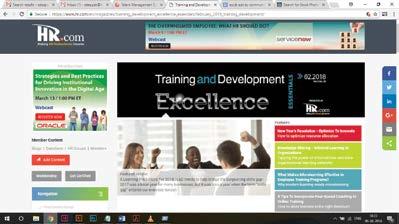
Employee Learning & Development Excellence - Monthly Interactive Learning Journal
This monthly interactive learning experience showcases effective, learner-centered technologies and content to facilitate the formal and informal transfer of the latest e-learning knowledge, information and skills in today’s workplace.
Training and Development Virtual Events
Employee Learning & Development - Virtual Events

Virtual events in the Training and Development track help you stay on top of the latest training, development and assessment techniques in order to maintain a competitive edge in the marketplace. Develop your skills, concepts, and attitude changes, and gain more knowledge to enhance performance. Training is crucial for organizational development and its success which is fruitful to both employers and employees of any organization. Some important benefits of training and development include: Increased productivity, Less supervision, Job satisfaction and Skills development. Each Virtual Event consists of up to 10 credit webcasts.
Virtual events in the Employee Learning and Development track help you stay on top of the latest training, development and assessment techniques in order to maintain a competitive edge in the marketplace. Develop your skills, concepts, and attitude changes, and gain more knowledge to enhance performance. Training is crucial for organizational development and its success which is fruitful to both employers and employees of any organization. Some important benefits of training and development include: Increased productivity, Less supervision, Job satisfaction and Skills development. Each Virtual Event consists of up to 10 credit webcasts.
Training and Development Webcasts for Credit
Employee Learning & Development - Webcasts for Credit
HR.com webcasts deliver the latest Training and Development industry news, research trends, best practices and case studies directly to your desktop. Webcasts are available live online with a downloadable podcast and a copy of the slides (PDF) available before and after each webcast. Earn all of the required recertification credits for aPHR, PHR, SPHR, GPHR, and SHRM Certifications. HR.com’s one-hour webcasts, in every HR specialty including HRIS and Payroll, are pre-approved for HRCI and SHRM credit (excluding Demo webcasts).
Training and Development Community
Employee Learning & Development - Community
Join almost 13,000 HR.com members with a similar interest and focus on Training and Development. Share content and download research reports, blogs, and articles, network, view educational webcasts, and “follow” peers and have them “follow” you in a social network platform to communicate regularly and stay on top of the latest updates. This well established Training and Development Community is an invaluable resource for any HR professional or manager.
Use these invaluable Training & Development resources today!
Employee Learning & Development
SEP 2017 Vol. 5 No. 09
For more information phone: 1.877.472.6648 | email: sales@hr.com | www.hr.com
In a world of unparalleled challenges (global pandemic, racial injustice, political rivalry, digital 4.0, emotional malaise), uncertainty reigns. Finding opportunity in this context requires harnessing uncertainty and harnessing starts with reliable, valid, timely, and useful information. The Excellence publications are a superb source of such information. The authors provide insights with impact that will guide thought and action.

Excellence publications are my ‘go-to’ resource for contemporary and actionable information to improve leadership, engagement, results, and retention. Each edition offers rich and diverse perspectives for improving the employee experience and the workplace in general.


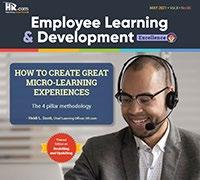
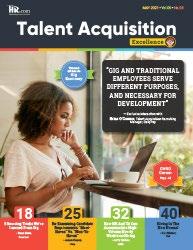
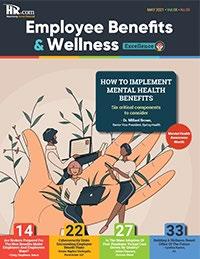
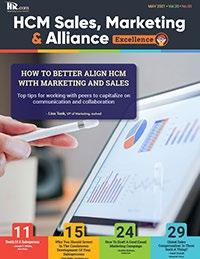



I regularly read and contribute to Leadership Excellence and Talent Management Excellence. I use many of the articles I read to augment my own presentations and I often share the articles with my clients. They are always quick, right on target for the latest issues in my field, and appreciated by my clients. If you want to stay up to date on the latest HR trends, choose a few of the different issues from the Excellence series of publications.
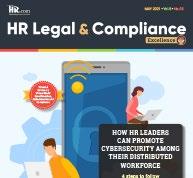

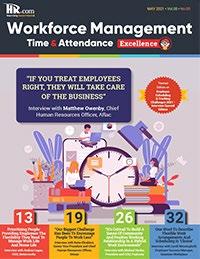
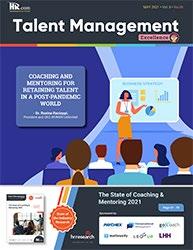
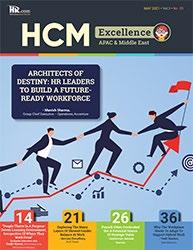
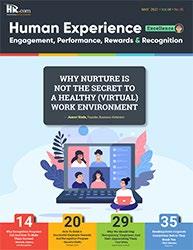 Dave Ulrich
Rensis Likert Professor, Ross School of Business, University of Michigan Partner, The RBL Group
Julie Winkle Giulioni
Author, Virtual /Live Keynote Presenter, Inc.’s Top 100 Leadership Speakers
Dr. Beverly Kaye CEO, BevKaye&Co.
Dave Ulrich
Rensis Likert Professor, Ross School of Business, University of Michigan Partner, The RBL Group
Julie Winkle Giulioni
Author, Virtual /Live Keynote Presenter, Inc.’s Top 100 Leadership Speakers
Dr. Beverly Kaye CEO, BevKaye&Co.
WHY EXCELLENCE PUBLICATIONS?
We’re eager to hear your feedback on our magazines. Let us know your thoughts at ePubEditors@hr.com
Why Development Planning Is Broken: HR’s Dirty Little Secret
Here is a new, human-centered approach to employee learning and upskilling
By Jamie Broughton, Avenue Careers
Given the current market, organizations are scrambling to invest in their workforce through upskilling and career programs. Every year we all campaign about performance goals and development plans,

chasing after leaders to get their team’s goals in.
Yet, in our daily conversations with HR professionals the story is the same: we know we are supposed to do it and enjoy
it, but just like those we are supporting, the development planning process we champion is uninspiring, boring, and at the bottom of our to-do lists.
Submit Your Articles Employee
&
Excellence presented by HR.com MARCH 2023 7 COVER
Learning
Development
ARTICLE
HR’s Dirty Little Secret: We Aren’t Completing Our Plans Either
At the end of the day, what people really want at work is to have an impact while doing interesting, meaningful work with great people. That is about it.
Instead, we make it complicated. We are usually talking with everyone about development plans, skills inventories, competency models and rating systems... language and processes that serve the organization, but not the human.
To non-HR types, this is what we call “HR Weird-ry” - now, do not get me wrong, much of this stuff is important, however when it comes to mobilizing a workforce and getting them interested in taking ownership of their growth - we have taken the wrong approach.
Upskilling Is Crucial - It’s the Planning that’s Broken
Let us flip the script here. What if we made upskilling and development about the individual, not the plan? A plan is the outcome of the process, it is not the purpose of the process.
We are proposing a whole new, human-centered approach that increases the value for organizations while being meaningful and interesting for people:
1. Get curious - Growth is sometimes plain hard and almost always inconvenient.
Yes, their skills are important to the organization but what do they enjoy? What are they interested in? Getting curious taps into the dramatically underestimated ingredients for growth - motivation and commitment.

2. Identify their distinct ability - Their unique mix of talent and aspiration. If money were handled, they would do it forever and for free. It taps the best of what they have to offer the world and the organization. It comes with a lifetime of natural growth, impact and joy. Who does not want that?
3. Then, the skills - What skills could they learn/develop to enhance that distinct ability even further? We call these the multiplier skills - the skills that, when developed, help the individual make an even bigger impact (e.g. a creative person enhances her ability to write impactful pieces by developing the skill of being organized).
4. Align with the team’s priorities - How can the leader and the individual partner together offer more opportunities for the distinct ability to be used while developing the new skills required? How can they meet team goals while doing that?
5. Next, create a plan that serves both the human, the team and the leader. You would be surprised how much more interested leaders become
when there is something in it for them.
6. Finally - stop chasing people around to get their plans done - we all know you have better things to do.
If you are stuck wondering why development planning is so hard or how to begin upskilling - refocus on what is important, stop the HR ‘Weird-ry’, and let us get more people talking about what they really want to do.
Remember, it is not about the plan; it is about the people (you included).
Would you like to comment?
Jamie Broughton is an award-winning author, retired executive coach and the CEO of Avenue Careers
Why Development Planning Is Broken: HR’s Dirty Little Secret
Submit Your Articles Employee Learning & Development Excellence presented by HR.com MARCH 2023 8
Enabling HR Professionals to be Smarter www.hr.com/virtualtraininganddevelopment Register for a quick demo today at Make your training and development quick, easy and accessible to all with HR.com’s Online Virtual Events Platform. Looking to train employees on a global level? Train and Develop them Virtually! Train & Develop employees immediately Connect and communicate through chat Present videos or webcasts Survey employees training needs Quick and easy upload of training materials Extend your reach internally and externally within your organization email: sales@hr.com | phone: 1.877.472.6648 ext 127
‘Employee Upskilling Will Help Organizations Be Better Prepared To Mitigate Future Skills Gap’
“The current skills shortage has far-reaching impacts on organizations, including on business outputs. As a result, companies that conduct a skills assessment now and upskill/reskill employees, accordingly, will be better prepared to mitigate the skills gap of the future,” said Vanessa Williams, Founder and CEO, of Leading Edge Consulting, LLC.

For 25+ years, Vanessa led service, relationship management, productivity, and talent development at major financial services institutions for large client segments in the U.S. and internationally.
In an exclusive interview with HR.com, Vanessa touches upon why employee skilling, reskilling, and upskilling are crucial today, what organizations must do to engage and retain talent, and how can they create opportunities for upskilling and reskilling, among others.
Excerpts from the interview:
Q.Why employee skilling, reskilling, and upskilling are so important in current times and in the future?
Vanessa: Reskilling and upskilling serve to address and meet the needs of a company and maximize an employee’s potential at any given time. In current times, we face a systemic need to integrate authentic DE&I initiatives and as a new area of focus in the workplace, this requires that current employees reskill or upskill to develop an understanding of these societal issues.
Skills development should support employees in positioning themselves for growth within a company – whether reskilling to allow for horizontal mobility or upskilling for a promotion. As layoffs happen to the masses and talent retention continues to pose a challenge, the mutual benefits of reskilling or upskilling in the workplace make it more important now than ever before.
Straight Talk with HR.com
Exclusive interview with Vanessa Williams, Founder and CEO, Leading Edge Consulting, LLC.
Submit Your Articles Employee Learning & Development Excellence presented by HR.com MARCH 2023 10
When organizations reskill and upskill current employees, the employee’s value increases and they contribute to a healthier and more dedicated workforce. When reskilling and upskilling does not happen, contribution stays relatively stable while the cost of employing a staff member increases over time.
The current skills shortage has far-reaching impacts on organizations, including on business outputs. As a result, companies that conduct a skills assessment now and upskill/reskill employees, accordingly, will be better prepared to mitigate the skills gap of the future. Coaching can be the element that makes an employee or HR leader step back and think about what is missing that would tie all the pieces together within an organization. As the middleman between points A and B, coaching establishes a process to navigate reskilling and upskilling for years to come.
In terms of workforce management and talent development, what are the challenges organizations face and how do they engage and retain talent?
Vanessa: Organizations are facing increasing challenges in workforce management and talent
development as the recession looms and employees continue to demand new levels of support from their employers.
Organizations are left to balance low resources, high output needs, and the challenge of meeting the digitization of the workplace. However, organizations that utilize their HR and learning & development (L&D) teams now to evaluate potential skills gaps will be better prepared to meet developing business needs in the coming years.

Since talented employees have more options and are more courageous to leave their jobs, organizations are better off if they upskill their current talent rather than constantly recruiting to combat turnover.
Leaders that incorporate strategy driven by HR and L&D can evaluate what skills are needed for the future of the company’s success. A skills and gap assessment allow a company to plan accordingly and can shape reskilling and upskilling needs in a way that is mutually beneficial to both the organization’s future and the employees’ personal and professional development.
Straight Talk with HR.com
Q. Submit Your Articles Employee Learning & Development Excellence presented by HR.com MARCH 2023 11
Further, organizations can engage and attract new potential talent by showing thoughtfulness in how they plan for the future. In today’s market, employees are weary to join a new company at the risk of being laid off. An organization with a strong plan for the future negates this concern and provides a steady and established work environment to attract top talent, while placing a heightened focus on retaining current talent.
Coaching serves to support HR and L&D teams in this skills and gap assessment by supporting actions in the present that mitigate the gap now and in the future. As the future of the workplace continues to rapidly evolve, companies that want to stay competitive need to support the upskilling and reskilling of current talent and express these opportunities as employee benefits to attract and supplement with new talent.
What are the key challenges CHROs face when it comes to the skilling of employees? How should

they address them?
Vanessa: CHROs must evaluate what the company and society as a whole need to drive reskilling and upskilling efforts. However, HR leaders can not do this alone; they must be supported by new ways of leading across all managers within an organization. By creating new programs across the business to meet future needs and anticipate changes, organizations can proactively address challenges posed by skills shortages.
While reskilling and upskilling opportunities can be effective tools to support company and employee growth, they must be done thoughtfully and strategically to guarantee the right impacts. This is where professional coaching comes in. Coaching supports improved communication skills, optimized team and individual performance, expanded professional career opportunities and improved business management strategies, according to the 2022 Global Coaching Awareness Study by the International Coaching Federation (ICF). This data reflects the value coaching brings in reshaping leadership styles to support reskilling and upskilling goals.
Straight Talk with HR.com
Q. Submit Your Articles Employee Learning & Development Excellence presented by HR.com MARCH 2023 12
This is increasingly a challenge when responding to societal issues. As HR leaders consider DE&I initiatives, for example, they are faced with the challenge of effectively acknowledging the societal need to support diversity, while managing the internal challenge of doing so in an authentic and meaningful way for the organization’s specific team. Coaching supports this with guidance-driven conversations that allow CHROs to analyze future goals of the organization as they relate to business and society, look at current staff skills, and decide where upskilling and reskilling can be most beneficial to enhancing the skills’ portfolio.
How is the employee learning and development landscape changing?
Vanessa: The employee learning and development landscape has evolved significantly with the “reskilling revolution” predicting the transformation of nearly 1.1 billion jobs by technology in the next decade. As a result, employees are eager to develop and expand their skills to ensure they future-proof their jobs ahead of this digital transformation. With the current recession underway and layoffs happening every day, employees are further motivated to partake in adult learning to support horizontal and/or vertical mobility within their current roles – this supports meeting company-wide needs, while guaranteeing a spot in the organization amidst downsizing.
Across the board, learning and development must be digital in nature – it should be easy to export to remote locations, more on-demand and flexible to change with business needs, and multi-cultural, produced in different languages and sensitive to the needs of diverse employee groups.
Addressing where an employee has an opportunity to reskill or upskill starts with a coaching-driven conversation with the L&D team. By beginning with a conversation about what’s needed and what the person can realistically provide, an analysis of opportunities to mitigate the skill gaps occurs naturally.
Going forward, how do organizations create opportunities for upskilling and reskilling?
Vanessa: Organizations must invest in the teams they have now – this can be done through reskilling and upskilling current talent. Coaching can support L&D and HR teams in conducting an assessment to see what skills are currently on the team, what the employees’ interests are, and how they can be best utilized to support operational goals.
As organizations across industries face this technological transformation of the workplace, the human element will become increasingly valuable. While technology can alter the way work gets done, certain components driven by person-to-person engagement can only be done with human talent. Technology must be led and managed by humans to earn predetermined results. Though technology is a driver for change, an evolution of human leadership will be the decider of how employees reskill and upskill to solidify their role in this transformation.
Organizations can also provide more online learning opportunities, become more selective about which employees serve what roles, and provide career development to help employees understand what they need to learn to advance within the company.
Would you like to comment?
Q. Q. Straight Talk with HR.com Submit Your Articles Employee Learning & Development Excellence presented by HR.com MARCH 2023 13
“Upskilling” May Be Wasting Company Resources, And Humanity Is The Answer
4 skills we should develop to remain relevant
By Jim Frawley, Bellwether
Thetraditional work model, as we have come to know it over the past several decades, is changing in real-time, right in front of our eyes. As we embrace remote life, corporate and small business offices are downsizing or closing altogether. Companies are evaluating productivity and budget and letting employees go as a result. New artificial intelligence tools are entering the scene, and it seems like we have only begun to scratch the surface.
So what does this mean for the current skill set of the workforce? How should we adapt both as individuals and organizations in order to cater to future skill requirements? And is the solution as simple as upskilling for future success?
Given the changes we have already witnessed, paired with a strong technology influence, it is more than likely that upskilling alone will not bridge the gap between current employee skill sets and the future of work. Instead of focusing on the concept of upskilling, we need a fundamental rewrite of traditional learning and development models.

Let us break this down into itemized skills. Looking towards the future, there are four uniquely human
skills we can continue to develop in order to remain valuable: self-awareness, interpersonal connection, creativity, and facilitation.
1. Self-awareness
Having a strong sense of self is essential for change management – and more often than not it is important to take ‘awareness’ one step further towards ‘understanding.’ An individual with a solid self-understanding and awareness will be more dynamic when faced with unpredictable change, difficult conversations, and new thought processes.
Submit Your Articles Employee Learning & Development Excellence presented by HR.com MARCH 2023 14 Top Pick
This includes having a strong belief system on which to define the kind of leader, employee, or individual we aspire to be, as well as having the capacity to interact with and challenge others.

2. Connection
Interpersonal relationships will always set us apart from any technological advancement. Relationships hold such a high value in the existing workplace, and will continue to do so moving forward. Our ability to network, meet new people, and develop existing human connections fosters new experiences and success in the workplace. We are pack animals at our core and heavily rely on connections to grow, learn, and thrive, ultimately impacting our ability to elevate on both a personal and corporate level.
3. Creativity
The line between artificial intelligence and human innovation has grown thin and blurry, however, it is still present nonetheless. There needs to be a productive and compatible bridge between the two sides that drives a unique form of creativity and collaboration. How do we challenge the robots to go further than they have before, or brainstorm concepts that have yet to exist.
We must stay inspired to remain creative to preserve the separation between human and artificial intelligence. But here is the secret – those who adapt and learn to utilize AI tools to fuel their own creativity will find themselves lapping at others who fear, resist, and avoid these tools.
4. Facilitation
Our ability to interpret and facilitate discussion and project management will come into play as stand-alone tasks and to-do lists are swept away by automation. It really boils down to our innate potential to be strong leaders. We have the capacity to understand and execute a holistic approach to a situation, conflict, or project – and beyond that, how to delegate or guide others to succeed throughout the process.
What skill does each employee possess, where can we identify team chemistry, and in doing so, how do
we maintain a ‘big picture’ vantage point that lends itself to the creation of high-quality work?
Archaic “training” programs are not preparing employees to face the impending challenge of competing with expanding AI technologies. Creating a course to teach a skill like coding will soon prove to be an unnecessary expense, and businesses will no longer be able to justify the time, cost, and effort when these tasks can be automated in a fraction of the time.
Alternatively, learning and development needs an approach that merges the needs of the business with personal capability, while placing an emphasis on human creativity and connection.
As human beings, we have the ability to change our own thought processes, including the way we interpret and request information in order to think in terms of parameters rather than itemized tasks. It is our responsibility to recognize and accept the presence of technology, and allow it to consume inconsequential, monotonous work, in order to position ourselves as creators and thinkers – not just doers.
We have to let go of our stress and haste towards acquiring technical or finely-tuned skills, when technology is rapidly taking over these areas of business. Instead, appreciate what separates humanity from artificial intelligence – self-awareness, human connection and relationships, creativity, and management. What separates us will also position us to remain relevant and valuable in the workplace, and learning and development efforts have to begin shifting in this direction in order to support individuals and businesses alike.
Would you like to comment?
“Upskilling”
Be
May
Wasting Company Resources, And Humanity Is The Answer
Jim Frawley is a Coach, Consultant, and the CEO and Founder of Bellwether.
Submit Your Articles Employee Learning & Development Excellence presented by HR.com MARCH 2023 15
Futures Literacy: The Future Of Upskilling And Employee Learning

Preparing organizations for the future of work
By Dr. Jonathan H. Westover, Woodbury School of Business (UVU)
These days, uncertainty is the name of the game. Business and community leaders have to grapple with complex societal drivers of change, including disruptive technological innovations and the shifting
geopolitical and socioeconomic landscapes resulting from globalization. UNESCO explains it this way: “The future is uncertain. Climate change, pandemics, economic crisis, social exclusion, racism, the oppression of women,
inter-generational conflict, and more, shatter the conventional images of the future that humans use to plan, to feel secure, to be confident enough to invest in tomorrow.”
Submit Your Articles Employee Learning & Development Excellence presented by HR.com MARCH 2023 16
With no shortage of existential obstacles facing the organizations of the future, leaders both bear the burden of responsibility and have the opportunity to address these challenges to prepare their people and their organizations for the future of work.

Developing Futures Literacy
The problem is, there is no crystal ball and no one can actually see the future. Once more, we all have generations of ingrained social programming through existing norms and culture, with the associated prejudices and confirmation bias. As a recent
Medium article put it, “They have limited our ability to imagine outside predefined paradigms, or to sense and make sense of phenomena that may not belong to pre-existing models.” If we want to prepare for an unknowable and uncertain future, we must seek meaning and images of the future that fundamentally break free of these constricting paradigms and pre-existing models.
So if no one has a crystal ball and we can’t know the future, why even bother? Why is it important to develop a futuresthinking mindset? One way to think about this is what is called futures literacy, which we should
consider every bit as essential as other forms of literacy in the workplace. UNESCO defines futures literacy as “a capability. It is the skill that allows people to better understand the role of the future in what they see and do. Being futures literate empowers the imagination, and enhances our ability to prepare, recover and invent as changes occur.”
In other words, through futures literacy, we increase our ability to effectively see through a glass darkly and look into the messy, complex and unknown future and persevere in creating a clear vision for our people that we can then work toward fulfilling.
Futures Literacy: The Future Of Upskilling And Employee Learning
Submit Your Articles Employee Learning & Development Excellence presented by HR.com MARCH 2023 17
Developing a FuturesThinking Mindset
Recognizing the importance of futures literacy, how can we develop a futures-thinking mindset? A recent Medium article outlines two important factors:
1) take an interest in the possible, and not only the actual, and 2) understand the changing system. A futures-thinking mindset requires us to foster hope in what may currently seem likely unattainable, but is still possible, however improbable. If we are only focused on the observable here and now, without stretching our imagination and exercising our optimism, we will always fail to see around the corner and prepare for future disruptions. Additionally, as we continually scan the external environment to better understand the underlying mechanisms and systems at play, and the drivers of those changing systems, we can tie our imaginative optimism to creating a clearer understanding of how to drive needed systemic change to generate the future we hope for.
Scenario Planning
Another way to build upon the possible and understand the changing system that impacts our unknown future is through scenario planning. As defined in a recent Forbes article, “Scenarios are alternate futures in which today’s decisions may play out. They are stories with beginnings, middles and ends. Good scenarios have twists and turns that show how the environment might change over time.”
One way to approach scenario planning is through employing the utopian, status quo and dystopian typology:
Utopian Scenario: A utopian, or “best case,” scenario helps us think through what possible positive futures might look like. While a utopian scenario may be unlikely, it can provide us with something to strive for and can generate the hope and purpose that can lead to behavior change. Even if we don’t ever arrive at the full utopian outcome, coming up short in our shooting for the stars, we can still see dramatic improvements.
Status Quo Scenario: A status quo scenario helps us think through everything that will need to happen just in order to just keep things the way they are. Maintaining the status quo is a difficult task in and of itself, and it is important to recognize how much work and how many resources it will take just to sustain current initiatives, programs and events. A status quo scenario isn’t exciting and usually won’t capture the imagination of your people, but it can be a good way to plan for a sustainable future outcome.
Dystopian Scenario: Nobody wants the dystopian outcome, but it is vital that we be clear-eyed regarding the threats we face and that we systematically work through how we will respond to a range of unforeseen challenges and obstacles in a complex and unknown future. Just like the
utopian scenario, the dystopian scenario is also unlikely. But having a healthy acknowledgment of what could go wrong will help you plan and prepare.
Conclusion
As the saying goes, “In this world, nothing is certain except death and taxes.” A corollary to this is that we can count on uncertainty, continual disruption and constant change all around us. We get to decide how we choose to respond to this uncertainty. Through developing a futures literacy capability and fostering a futuresthinking mindset, we may not be able to see into the future, but we will be better equipped to prepare, plan and innovate to create the future we hope for.
Dr. Jonathan H. Westover is Chair and Associate Professor of Organizational Leadership in the Woodbury School of Business (UVU), Academic Director of the UVU Center for Social Impact and the UVU SIMLab, and Faculty Fellow for Ethics in Public Life (previously the Associate Director) in the Center for the Study of Ethics. He is also an experienced OD/HR/Leadership consultant (Human Capital Innovations, LLC), with experience transforming organizations across the globe.
Would you like to comment?

How To Build A High-Quality Email List That Drives Business Success Submit Your Articles Employee Learning & Development Excellence presented by HR.com MARCH 2023 18
How 11 Companies Are Building A Future-Ready Workforce
Effective tips about employee upskilling
By Brett Farmiloe, Terkel.io
From teaching people how best to train others to taking inventory of your team’s skills, here are 11 answers to the question, "Can you share your most effective tips about how you upskill to build a future-ready workforce?"
1. Train the Trainers
While we do a great deal of training in-house and with various learning platforms where necessary, the most impactful upgrade that I've seen to upskill our team has been running train-the-trainer sessions.
Quality of training will vary with internal trainers—some will be great, some will be good, and some will be sub-par, especially if your company is more than a few hundred people strong.
Creating a set of standards and guidelines for trainers, and then training them on the correct techniques rather than expecting them to figure out how to teach because they are experts in the subject, is the correct way to go to ensure an actually up-to-date and future-ready workforce.
Dragos Badea, CEO, Yarooms

Train the Trainers 2. Embrace AI's Impact on Productivity
Encourage Employees to Share Education Goals 4. Identify Improvement Gaps 5. Lean into Peer Coaching 6. Work With Your Team’s Capabilities 7. Stay Up to Date With the Digital Transformation 8. Reward Upskilling 9. Make It a Part of Company Culture 10. Provide a Learning Allowance 11. Conduct a Skill Inventory
1.
3.
Submit Your Articles Employee Learning & Development Excellence presented by HR.com MARCH 2023 19 Top Pick
2. Embrace AI's Impact on Productivity
We are embracing the new wave of artificial intelligence tools like ChatGPT and teaching colleagues how to ethically and effectively use the tool. We are sharing best practices in AI Prompt Engineering so that we are on the cutting edge.
With all the talk about AI taking jobs and scaring knowledge workers, it was important for us to inspire our workforce to learn to use the tool for good. It has helped our consultants embrace client requests with greater confidence and has helped us stay more strategic than administrative.
Joey Price, Owner and Podcast Host, Jumpstart: HR



4. Identify Improvements Gaps
Analyzing the talents of your workforce will help you create targeted training programs that are tailored toward individual needs and job roles. In addition, companies should leverage technology platforms, such as online courses or webinars, which can provide employees with convenient access to relevant materials from anywhere in the world.
Another key component of successful upskilling strategies is providing opportunities for employees outside their job roles. Encouraging crossdepartment collaboration can give employees new perspectives on different problem-solving methods and potential solutions, thus fostering innovative thinking within the organization. Additionally, offering educational help can be beneficial for both employers and employees alike.
3. Encourage Employees to Share Their Education Goals
One of the best ways to encourage upskilling and development is to encourage your employees to tell what they want to learn. Most people know how they want to improve themselves, and if they have some say in what skills they get to work on, they will be much more enthusiastic and engaged.
If you ask them, "What do you wish you knew more about, and what creates a bottleneck for you?" you will be better able to pair them with the right training to make their jobs easier and remove barriers. Asking employees what they want to learn about also allows them to offer their thoughts on improvements that might make the organization more effective.
Anthony Martin, Founder and CEO, Choice Mutual
5. Lean into Peer Coaching
Peer coaching is a great way to upskill employees at your organization. If you don't know, it is a private process where two or more coworkers collaborate to reflect on current practices, develop new skills, share ideas, teach one another, research, or resolve issues at work.
This exposes employees to a wider variety of workplace skills through peer coaching. It is appealing because it has a more informal side to it. Participants have a peer they can chat with directly, ask questions when they arise, and learn from observing them at work. They can develop leadership abilities through coaching, including attentive listening, helpful feedback, prompt communication, and the capacity to instruct and mentor.
Travis Lindemoen, Managing Director, nexus IT group
Madhurima Halder, Content Manager, Recruit CRM

How 11 Companies Are Building A Future-Ready Workforce
Submit Your Articles Employee Learning & Development Excellence presented by HR.com MARCH 2023 20
6. Stay Up to Date With the Digital Transformation
Invest in digital tools that allow employees to access new skills and knowledge quickly and efficiently. Technology such as online training programs, e-learning platforms, and virtual classrooms can help employees access the resources they need to gain new skills and keep up with changing industry trends.
Additionally, providing employees with access to external resources such as mentorships and networking opportunities will allow them to learn from those in their field and stay up to date on fresh developments.
7. Reward Upskilling
Stress to your organization the importance of upskilling in keeping one's skills current and future-ready, so they continue to be relevant. To motivate your staff, try offering incentives for those who voluntarily upskill. This can be a professional development allowance for upskilling, a move up the pay scale, or even a promotion.
Empower them by providing guides and paths in their upskilling journey. You can monitor industry trends and emerging technologies by subscribing to relevant publications and consulting with experts in your industry to get insights into the skills that will soon be required.
Peter Hoopis, Owner and CEO, Peter Hoopis
 Lilian Chen, Co-Founder and Chief Operating Officer, Bar None Games
Lilian Chen, Co-Founder and Chief Operating Officer, Bar None Games

8. Provide a Learning Allowance
To help your people upskill, you can set aside a budget for a learning allowance. They can use it to enroll in online courses or certification classes to keep their skills up-to-date or learn new ones.
The costs of training courses often hinder people from taking them, especially those in rank and file. When you support their desire to learn or continue their education, it can also motivate them to keep upgrading their skill set and staying current with the latest trends in the industry. That will also help them grow in the company and be a more valuable asset to your teams.
9. Make It a Part of Company Culture
To encourage employee learning, it is important to make upskilling part of the company culture by creating programs that are engaging, accessible, and tailored to the individual's needs. Additionally, it is important to create clear pathways for employees to advance their careers and foster a supportive environment where learning is encouraged and celebrated.
It is essential to provide resources to help employees achieve their learning goals. For example, having an internal mobility policy or providing tuition reimbursement or access to online courses can help employees stay up to date with the latest trends in their field.
Aidan Kang, CEO, House of Debt
 Tawanda Johnson, HR and DEI Consultant, Sporting Smiles
Tawanda Johnson, HR and DEI Consultant, Sporting Smiles

How 11 Companies Are Building A Future-Ready Workforce
Submit Your Articles Employee Learning & Development Excellence presented by HR.com MARCH 2023 21
10. Work With Your Team’s Capabilities
You can upskill your workers through many methods, including peer coaching, online courses, self-study programs, and traditional classroom settings. It's important to keep in mind that people prefer to learn rather than be trained.
Making it easy for your employees to gain the skills they need when, where, and how they choose is your responsibility as an employer. For example, a participant may not be able to take a week off work to enroll in a professional development course. A combination of coaching and microlearning (where participants learn in small doses at their convenience) may be more effective.
Employers must also consider whether the participating employees are eager to pick up new skills, how to persuade them if they aren't convinced, and how they perceive these skills will benefit them in the future. Knowledge retention is equally important to learning. Giving your staff a chance to put their training into practice and evaluate the results is the best approach.
11. Conduct a Skill Inventory
First, create a list of skills your company currently needs and a list of predicted skill needs. Next, send out a company-wide survey asking employees if they have these skills and include a competency scale. Finally, analyze the results to pinpoint where skill gaps are and prioritize professional development by the entire company or departments.
The best thing is to offer any development or upskilling opportunities company-wide, which encourages everyone to develop their skills.
Jarir Mallah, HR Specialist, Ling App
Joe Li, Managing Director, CheckYa

Brett Farmiloe is the Founder and CEO – and currently CHRO - of Terkel.io Brett is an SHRM Influencer and has also been a keynote speaker at several state SHRM conferences around the topic of employee engagement."


Would you like to comment?

How 11 Companies Are Building A Future-Ready Workforce Submit Your Articles Employee Learning & Development Excellence presented by HR.com MARCH 2023 22
The Future Of Upskilling Is Clear: Get Back To Soft-Skill Basics
Upskilling is shifting towards soft skills as employers prioritize interpersonal skills
By Karen Moore-Jackson, Graziadio School of Business
Asmost HR managers know, companies went on a hiring frenzy well into the pandemic, causing newly minted workers to put their training and post-graduate education plans on hold. This trend was understandable as these workers were being offered opportunities that a year or two prior would have required advanced skills or a degree.
Now that companies have adjusted their staff levels and the economy has cooled, workplaces have settled into a routine workplace model (full in-person, hybrid, fully remote, etc.). In this environment, there is an uptick in interest in post-graduate education across all programs. Some top schools are seeing increases in applications of more than 20 percent for the 2024 class.
Submit Your Articles Employee Learning & Development Excellence presented by HR.com MARCH 2023 23
This is not an accident. While the new generation of workers is more adept at technical skills than ever, prospective MBA students are looking to sharpen their soft skills. According to the National Association of Colleges and Employers, employers are seeking professionals who can enhance productivity by interacting harmoniously and positively with staff, partners, and customers.
The proliferation of remote work has adversely impacted soft skills for many people, at all levels. As the executive director of recruitment at Pepperdine Graziadio Business School, I’m increasingly seeing applicants looking to join our MBA program to improve their communication, leadership, and problem-solving skills. These are skills that may have eroded or were never developed in the first place due to entering the workforce in a remote state or missing critical years of social development during their undergraduate education.
If you are an HR manager responsible for skill development in your organization, soft skills training has taken on greater importance. There are inherent problem-solving skills that the newer generation of workers has not developed. There is a big difference between working a problem out over Zoom versus

problem-solving elbow-to-elbow with colleagues. It is simply time for many professionals to get back to the basics of a functioning, thriving workplace and that starts with cultivating interpersonal skills.
In fact, our corporate partners at Pepperdine Graziadio are specifically seeking these skills out. HR managers are finding problems with their younger workforce, where even constructive feedback to some employees is not met warmly. While of course, the hard skills learned through an MBA program are invaluable, coming into an MBA program where you learn how to be empathetic, how to have effective communication, how to think critically, and how to be creative, will give prospective employees a leg up in interviews. Many of these skills have gone by the wayside and employers want them back.
Luckily, the incoming working generation - Gen Z - is very aware of the soft skills problem. According to a study by Tallo Data based on a survey of more than 2,400 Gen Z workers, 92% of respondents reported that they are able to confidently identify which soft skills they have. However, also according to Tallo, “empathy (8%) and relationship building (7%) ranked much lower on Gen Zer’s list of skills they’ve developed during the pandemic.”
The Future Of Upskilling Is Clear: Get Back To Soft-Skill Basics
Submit Your Articles Employee Learning & Development Excellence presented by HR.com MARCH 2023 24
This is not necessarily a cliche “Gen Z problem” either. All generations could use a refresher in collaboration. Employers that work with Graziadio say that it is invaluable for employees to collaborate with fellow students, who are in similar roles or time in their career, while facing the same challenges. This environment cultivates leaders and builds healthy workplaces. HR managers looking to invest in their workforce will find great value in exploring part-time MBA programs for their employees.
To be certain, the need for hard skills will always be in high demand. MBA programs must teach objective, quantifiable skills that are essential to completing technical tasks. But code writers, tax auditors, and actuaries who also have the ability to collaborate, share ideas, and motivate the team are well positioned to write their own tickets.

Overall, given the trends across the business world, these are the top three skills every working professional should be working on:
1. Problem-solving. It doesn’t matter what level you’re at in your career, problem-solving efficiently and harmoniously is paramount. According to recruitment firm Adaface, solving problems is beneficial in almost every job role and can help support verifiable characteristics and skills that enable and improve the employee’s performance and efficiency at a job. Professionals skilled at resolving conflict, troubleshooting, identifying gaps in data, or generating insights to apply to a problem are naturally in high demand.
2. Data decision-making. In the past five years, data has taken over as a major driver of career growth. According to Acumen Research and Consulting, the Global Data Analytics Market Size accounted for $31.8 Billion in 2021 and is projected to occupy a market size of $329.8 Billion by 2030, growing 29.9% from 2022 to 2030. The industry needs workers. Understanding data and how to apply it will increase personal prosperity as well as company growth.
3. Tie the balance sheet to the overall strategy. A balance sheet provides information on a company’s
resources (assets) and its sources of capital (equity and liabilities/debt). This sounds like a no-brainer, but too many employees focus on technical or operations at the expense of company finance literacy and strategy. A famous 2009 study from the Business Literacy Network found among a sample of executives taking a basic financial-literacy exam, the average score was only 38% - an F minus-minus. (I doubt it has improved much since that time). The balance sheet along with research and novel insights should inform the framework for how a company makes decisions.
Hard technical skills will be the prerequisite for joining any serious business organization, but it’s the soft skills that create leaders and advancement in the workplace. For HR managers who are looking to enhance workforce training, reskilling with a set of soft skills will aid the overall company in prioritizing, planning, and performing. No matter the work setting, tasks needed, or professional level, thoughtful upskilling will have top-level and bottom-line impacts.
Karen Moore-Jackson currently works for Pepperdine University as the Executive Director of Recruitment at the Graziadio School of Business. In this chief enrollment position, Karen oversees their recruitment superstructure: full-time, part-time, executive programs, engagement and recruitment operations and partnerships.
Would you like to comment?
The Future Of Upskilling Is Clear: Get Back To Soft-Skill Basics Submit Your Articles Employee Learning & Development Excellence presented by HR.com MARCH 2023 25
How Employee Upskilling Gives Employers An Upper Hand
Steps to improve the future of employee learning
By Jason Richmond, Ideal Outcomes, Inc.
Intoday’s rapidly-changing business environment no one can afford to stand still. Acquiring new skills is an ongoing necessity that must be embraced by employers and employees alike, otherwise your organization will undoubtedly fall behind the competition.
The most direct route is to implement upskilling programs at all levels of the company — that is supplementing an existing skill set with new competencies as opposed to reskilling, the learning of new abilities to do a different job.
In this article, we’ll explore the expected demands on the future workforce, steps for successful upskilling, and what the current workforce has to say about it.

Submit Your Articles Employee Learning & Development Excellence presented by HR.com MARCH 2023 26
Top Pick
Upskilling: An Example
Let us begin with a simple example of upskilling and its benefits. Imagine you are a software engineer. You have a bachelor’s degree in computer and information technology and several years’ of expertise creating software tailored to users’ demands.
You enjoy your work because you can use your imagination and problem-solving abilities to develop answers to complex problems. Still, your ultimate professional objective is the position of chief technology officer, which requires earning an MBA and becoming proficient in managing computer and information systems and teams.
Your company provides a continuing education benefit that covers the cost of courses relevant to your work, so you can begin your MBA after researching schools and receiving your manager’s clearance.
Your employer benefits, as you are more likely to remain employed by them with newly-acquired skills.
You benefit by receiving an MBA for free (or at reduced cost) and advance along the route to your ideal position.
Meeting the Demands of the Future
Industries advance and quickly change thanks to ever-developing technology and business needs.
Result: Tere may be a skills gap between the current workforce’s capabilities and what is required of them to do their jobs well in the future.
According to research by the U.S. Chamber of Commerce Foundation, 74 percent of recruiting managers recognize a skills gap in the labor market, a significant barrier to hiring.
While employers invest heavily in employee upskilling, it is worth noting that employees themselves can enhance their skills independently through private training, certification programs, and ongoing education, and offer greater value to their employers — and prospective employers.
Meeting Future Skill Requirements
The emphasis of the global labor market is shifting away from degrees and job titles and moving towards a growing focus on the real world skills that candidates must possess to be considered for a position.
According to research by McKinsey, in collaboration with the Rework America Alliance (an organization that helps workers transition into positions that provide higher pay, greater economic mobility, and better resilience to automation), they are doing so in increasingly significant numbers.
Boeing and IBM, for instance, have committed to implementing
open, inclusive, and skills-based hiring policies. Many companies have also collaborated with other groups to help employees go from lower-wage occupations to higher-wage positions depending on their skill sets, even removing degree requirements from some job advertisements.
Steps for Successful Upskilling
Here are three steps you can take to educate and motivate employees to upskill in their areas of interest. Tell them the following:
1: Determine your goals
Determine your end goal before you start upskilling. Start by asking yourself what you want to achieve in your career. Perhaps you desire to go from entry-level all the way to a senior management position.
Whatever your goal, you must keep it at the core of your strategy to succeed.
Tip for upskilling your team: Ask each member about their current and long-term professional objectives. Planning a long-term strategy can be easier when you concentrate on the people most likely to be involved.
2: Identify your knowledge gaps
Pinpoint your knowledge gaps by researching the skills required for the job you want and honestly identifying the skills you do not have and those you can improve upon.
How Employee Upskilling Gives Employers An Upper Hand
Submit Your Articles Employee Learning & Development Excellence presented by HR.com MARCH 2023 27
Find a mentor in your network and ask them about the qualities they look for in candidates, specifically in your chosen career.
Tip for upskilling your team: Every employee will need to fill a particular set of skills gaps in upskilling. When deciding the next step, perform a skills gap analysis to determine what each member can do better and then include that with their professional goals.
3: Create a plan
Start planning to use education and training to close your gaps as soon as you recognize them.
● Keep your budget in mind when comparing learning possibilities. You might not need to pay for an expensive boot camp if you can get the same information from free online videos.
● If your company does not have a lot of internal resources, consider setting aside a personal career development budget to invest in your own education.
● Regardless of your company’s internal resources there’s a good chance management will need to engage external expertise. Encourage corporate leaders to find a dedicated team of training professionals that will recognize and work with your unique corporate culture.
What Employees Think about Upskilling
Employers must understand this business fact: Today’s workers expect that they will provide upskills training.
According to a Pew Research Center survey,
● 87 percent of Americans understand that they must regularly train and learn new skills to succeed in their jobs and avoid falling behind in a workforce that is changing quickly
● 49 percent of respondents say their employers had a duty to ensure they have the skills necessary to succeed in today’s economy.
Employees assert that they would be willing to spend up to two days per month receiving training to advance their digital skills if their employer made it available.
When it’s Time to Reskill
Sometimes a more radical strategy than upskilling is required. Many blue-collar workers, in particular, may need to retool their skill set entirely.
According to McKinsey’s research, as advances in automation continue to rise exponentially, the demand for 17 million U.S. workers occupations will decline over the next few years, and 80% of these workers may need to reskill rather than upskill.
Employers must make more significant investments in their workforce’s reskilling and upskilling in light of these rapid changes. To stay competitive, you must provide your staff with the resources they need for success and demonstrate your commitment to their professional and personal development.
Forward-thinking companies recognize skills-based practices as a potent remedy for challenges facing the future of business. Yet, finding the best applicants for critical unfilled roles and retaining talent continues to prove difficult. Looking within saves considerable costs incurred in recruiting elsewhere. Make sure, therefore, that workers are aware of—and trained for--internal growth opportunities, which will boost employee satisfaction and retention.
That’s advantageous for everyone.
Jason Richmond is CEO and Chief Culture Officer at Ideal Outcomes, Inc
Would you like to comment?

How
An Upper Hand Submit Your Articles Employee Learning & Development Excellence presented by HR.com MARCH 2023 28
Employee Upskilling Gives Employers
The Future of Upskilling and Employee Learning


Sponsored by: Future-proof your workforce through upskilling and reskilling
2023 Special Research Supplement March 2023 INTERACTIVE MARCH 2023
ARTICLE
The Future of Upskilling and Employee Learning 2023 23

Future-proof
Narrowing
Are You Ready for Third Wave DEI?
By Dan Rust, Infopro Learning


The HR Research Institute, powered by HR.com, the world’s largest social network for Human Resources professionals, is a key part of our mandate to inform and educate today’s HR professionals. Over the past three years, the HR Research Institute has produced more than 85 exclusive primary research and state of the industry reports, along with corresponding infographics in many cases, based on the surveys of thousands of HR professionals. Each research report highlights current HR trends, benchmarks, and industry best practices. HR Research Institute Reports and Infographics are available online, and always free, at www.hr.com/ featuredresearch


REPORT SUMMARY
INDEX 30 INDUSTRY RESEARCH RESEARCH REPORT SUMMARY
RESEARCH
Survey conducted by: Sponsored by:
the Talent Gap 36
your workforce through upskilling and reskilling 32
42
Sponsor any of this year’s state of the industry research topics and come away with your very own affordable and branded research report and infographic, establish yourself as an industry thought leader by presenting at a one-day Virtual Event, and bolster sales through the generation of qualified leads. See
The Future of Diversity, Equity, Inclusion & Belonging Virtual Event
Mar 15-16, 2023
Learn more at: https://www.hr.com/ DiversityResearch
The Future of Coaching and Mentoring
Apr 5-6, 2023
Learn more at: hr.com/ CoachingResearch
The State of Rewards and Recognition Programs and Tools


Mar 29, 2023
Learn more at: hr.com/ RewardsRecognitionResearch
The Future of Payroll: New Trends and Global EORs Virtual Event
Apr 20, 2023
Learn more at: hr.com/newwaystopay
The Future of HR’s Role in Organizational Success
May 18, 2023
Learn more at: hr.com/organizationalsuccess
your brand with this year’s State of the
hot HR topics and showcase your expertise
Align
Industry
list of hot industry research topics below and give us a call to get started. A State of the Industry Research & Virtual Event Sponsorship Opportunity Contact us today to get started at sales@hr.com | 1.877.472.6648 | hr.com/industryresearch
The Future of Upskilling and Employee Learning 2023

Future-proof your workforce through upskilling and reskilling
Exclusive Research By HR Research Institute

Out of all the HR challenges facing today’s organizations, futureproofing the workforce is arguably the most important. For many companies, this will require a massive investment in upskilling and reskilling.
The World Economic Forum estimates that over one billion people will need some degree of reskilling by 2030. The focus will not only need to be on high-tech skill sets but specialized interpersonal skills. The Harvard Business Review estimates that 58% of the workforce will need new skills to do their work.
So, it should come as no surprise that 65% of the respondents in a recently completed HR.com report rated upskilling as the most significant future of work trend, overtaking hybrid work arrangements.
In this study, we take a close look at both the state of reskilling/upskilling and the overall learning function.
32 INDUSTRY RESEARCH RESEARCH REPORT SUMMARY
Given below are the highlights from the report.
The State of Learning Today Is Lackluster
Finding: Employees want to learn but organizations often fail to provide them with opportunities and encouragement
Survey Question: To what extent do you agree with the following statements?
Employees in your organization want to develop their skills
Managers encourage their employees to develop their skills
Employees are given dedicated time for learning
We provide identifiable learning paths for career growth and promotion
Just 30% say employees are organization’s learning culture
Employees are satisfied with the organization's learning culture
We have high levels of self-enrollment in non-mandatory courses
Agree Strongly agree
33
0 20 40 60 80 100 87% 49% 37% 32% 30% 27% 31% 8% 41% 9% 28% 6% 26% 2% 28% 5% 22% 56%
INDUSTRY RESEARCH RESEARCH REPORT SUMMARY
Eighty seven percent of respondents agree or strongly agree that employees want to develop their skills. Any lack of workforce skills does not appear to be due to a lack of employee motivation to learn.
However, few organizations have what we call “cultures of learning,” meaning that they support learning by providing an environment in which learning can thrive. In fact, just one in three feel employees are satisfied with their organization’s learning culture, and only 37% agree or strongly agree that employees are given dedicated time for learning.
Moreover, only about half (49%) feel managers encourage employees to develop their skills, and only about a third (32%) provide employees with identifiable career paths for growth and promotion.
Upskilling Has Become a Top HR Priority
Finding: The importance of upskilling has risen dramatically in the last two years and is expected to grow in the near future
Compared to two years ago, upskilling has become far more important, with 43% saying it has become much more important and another 38% saying it has become somewhat more important. So, a total of 81% say it has become more important.
What about the future? It looks like it’ll continue to be a priority, with 78% saying that it’ll become somewhat more or much more important in the next two years. We should note, however, that only 23% say it will become much more important, suggesting that the biggest jump in prioritization just occurred over the last two years.
34 INDUSTRY RESEARCH RESEARCH REPORT SUMMARY
Changing Work Roles, Evolving Priorities and Skills Deficits Are Driving the Need for Upskilling

Finding: The vast majority of HR professionals say at least some jobs will be disrupted by market and technology trends over the next three years










Virtually all respondents (97%) say some jobs/ roles will be substantially disrupted by the market or technological trends over the next three years.
And, well over half (57%) say that 31% or more of roles will be disrupted. Of course, nobody quite knows how this will play out. As this report goes to press, media is humming with discussions and articles about amazing generative artificial intelligence (AI) applications such as Dall-E 2 and ChatGPT. It is clear these technologies have the potential to change hundreds and perhaps thousands of different jobs and work roles.
Sometimes in tandem with changing technologies, shifting market trends can also have a major impact on job disruption, with the move to online retail being a good example.
35 INDUSTRY RESEARCH RESEARCH REPORT SUMMARY Exclusive HR.com Research The Future of Upskilling and Employee Learning 2023 READ THE REPORT
The Future of Upskilling and Employee Learning 2023 swe
to
and read the research report today.
To learn more,
invite you
download
Narrowing the Talent Gap
How to be a front-runner in the race for talent

The t alent crisis is real.
Project s are at risk .
It’s time to m ake t alent a strategic priority.
Summary
As a result of economic grow th and increasing projectization, the demand for project managers is expected to soar in the coming decade. At the same time, the collective impact of demographic trends, retirement s, and cultural shift s in the workplace, will create a shrinking t alent pool that is insu cient to meet demand. PMI and PwC’s latest global research indicates there is a lack of awareness, or perhaps some complacency, among project-based organizations of the risks that lie ahead, and the potential detriment al impact that the t alent crisis will have on project s and their ability to meet strategic goals in the future.

2
Successful projects are a key driver of global economic growth. As more and more industries become projectized, the demand for skilled project managers is expected to soar in the coming decade. But at the same time, aging populations and declining birth rates in many countries are shrinking the size of their workforces. According to PMI’s 2021 Talent Gap: Ten-Year Employment Trends, Costs and Global Implications report , the global economy will need a total of 25 million new project professionals by 2030. To close this gap, 2.3 million people will need to enter project management-oriented employment (PMOE) every year just to keep up with demand.
The talent gap is being exacerbated by the postpandemic ‘Great Resignation,’1 which has seen workers quitting their jobs in droves all over the world, and it seems that the situation will only get tougher. Microsoft’s Work Trend Index2 report estimates that over 40% of workers globally are considering quitting or changing professions in the coming year.
The Talent Gap: Facts and Figures
Project management-oriented employment (PMOE)—which includes skilled project managers and those in less formal project management roles, that encompass project management skills—makes up 3% of all global employment, equating to 90 million jobs. This is expected to grow to 3.2% or 102 million jobs by 2030.
By 2030, at least 13 million project managers are expected to have retired creating additional challenges for recruitment.
To close the gap, 25 million new project professionals are needed by 2030
Source: Project Management Institute. 2021. Talent Gap: Ten-Year Employment Trends, Costs, and Global Implications. (pmi.org)
At the same time, PMI and PwC’s latest global research indicates that talent strategies haven’t changed much. There’s a widespread lack of focus on developing and retaining existing project managers, and a lack of variety and innovation in attracting and recruiting new talent. The core problem, we believe, is that there isn’t a business case for investment in talent—one that explicitly aligns capabilities to organizational strategy and competitive advantage. The business case should describe how hiring, training, performance, and retention strategies will be aligned to those capabilities; and critically, it should use a data-driven approach to assess capabilities, measure progress, and link that to organizational performance.
Without a systematic approach and a focus on hard numbers, personal traits and behaviors will continue to be viewed as “soft” and risk being undervalued. And unless capabilities-building is recognized and treated as the central enabler of successful strategy execution, organizations will be unable to meet their goals, projects will falter, and the profession as a whole will be unable to avoid the impact of a global talent crisis. Most organizations seem unaware of the crisis, however some, albeit a minority, have begun to take action.
In July and August 2021, PMI and PwC undertook a global survey of 4,069 people involved in leading or facilitating the delivery of projects, programs, and portfolios. The survey sample was wideranging and included individuals with formal project management qualifications and those with job titles such as project/program/ portfolio manager, as well as those in less formal project management roles, and initiative and workstream leaders. The executive viewpoint was also well represented, with the survey capturing 1,348 C-suite responses.
Click to learn more about what organizations can do to minimize the impact of the crisis. Our research points to actions that make it easier to attract, develop and retain talent, as evidenced by the strategies taken by ‘high-performing’ organizations.
3
1 The term “Great Resignation” was coined by professor Anthony Klotz to describe the worldwide increase in people voluntarily leaving their jobs from April 2021 onward, supposedly as a result of the impacts of the COVID-19 pandemic and workplace conditions.
2 Microsoft Work Trend Index. 2021. The Next Great Disruption is Hybrid Work Are We Ready? Microsoft.
A b o ut P wC
ww w. pwc.c o m
ww w pwc c o m/s t r u ct u r e fo r fu r t h e r
A b o ut Project M a n ag e m e nt I n stitute (PM I) PM I o r g , , , Tw i t t e r L i n ke d I n
4
Powe ri ng The Proje ct Eco n o m y ™
Project Management Institute | Global Headquarters | 14 Campus Blvd Newtown Square, PA 19073-3299 USA | Tel: +1 610 356 4600
©2021 Pr oje c t M a n a g e m e n t In s t it u t e Al l ri g h t s r e ser ve d “PMI,” t h e PMI l o g o a n d t h e sl o g a n “Po w eri n g t h e Pr oje c t Ec o n o m y” ar e m arks o f Pr oje c t M a n a g e m e n t In s t it u t e, In c For a c o m pr e h e n sive li s t o f PMI tr a d e m arks, c o n t ac t t h e PMI Le g al D e p ar t m e n t “P w C” a n d t h e P w C l o g o ar e m arks o f Pric e w a t er h o use Co o p er s In t er n a t i o n al L i m it e d (P w CIL) Al l o t h er tr a d e m arks, ser v ic e m arks, tr a d e n a m e s, tr a d e dr e ss, pr od u c t n a m e s a n d l o g o s ap p e ari n g h er ei n ar e t h e pr o p er t y o f t h eir r e sp e c t ive o w n er s A ny ri g h t s n o t ex pr e ssly gr a n t e d h er ei n ar e r e ser ve d
CN T-21-027-TL(11/2021)
PM I .o r g
Build on your team.
What is CAPM® and how can it help my organization?
The Certified Associate in Project Management (CAPM) is a certification provided by the Project Management Institute (PMI), the world’s leading project management organization with almost 700,000 global members. In short, it is foundational to your project manager’s journey to receiving their PMP ® .

With a PMI certification behind their name, project managers can work in virtually any industry, anywhere in the world, with any project management methodology. Collectively, these professionals and consistently create better outcomes for businesses worldwide.
Learn more today
Whether your team has no project management experience at all or seasoned professionals—the Certified Associate in Project Management (CAPM) is the best way to improve upon their leadership skills.
Are You Ready for Third Wave DEI?
Dan Rust, Infopro Learning

For more than 30 years, I have been on the front lines of corporate diversity, equity and inclusion (DEI) initiatives, leading the development and delivery of employee communication, coaching and training efforts to build and maintain working environments that are inclusive, equitable and energizing for all employees.
I have worked with hundreds of DEI colleagues, consultants, advisors and practitioners – building out programs that have impacted hundreds of thousands of people. And as I look back at the past three decades, I can see three distinct ‘waves’ of effort and commitment in the corporate DEI space.
Nobody was made to feel too uncomfortable and corporate senior leaders were proud of their DEI ‘metrics’ progress, even if the lived reality of many minorities and disenfranchised people had not evolved much at all. Many black employees may have felt a bit more validated at work, while still needing to have “the talk” with their children.
Nationally, there was still a +30% point difference between Black and White homeownership. Educational outcomes for Blacks and other disenfranchised groups were still far below those of their White counterparts.
Prior to May 25, 2020, I would characterize the overall corporate DEI landscape as ‘slow and steady’. Progress was being made, albeit gradually. Hiring diverse talent and achieving equitable compensation became a priority while HR departments deployed training efforts designed to ensure compliance with government regulations and alignment with evolving societal standards. “We embrace diversity” (or some variation) became such a commonplace corporate statement/theme that it sometimes felt bland and meaningless.
Some were impatient to put more ‘teeth’ or substance into corporate diversity and inclusion efforts, while others expressed concern about (or just passively resisted) anything that might make anyone too ‘uncomfortable’. But progress, even slow progress with occasional backsliding, was still progress.
Second Wave DEI began in the immediate aftermath of George Floyd’s murder in May 2020. In the wake of nationwide protests, Corporate America acknowledged that more had to be done and promised to take an active role in confronting systemic racism.
42 STATE OF THE INDUSTRY RESEARCH
From Silicon Valley to Wall Street, companies proclaimed “Black lives matter”. JPMorgan Chase CEO Jamie Dimon adopted the posture of former NFL quarterback Colin Kaepernick’s protests against police brutality and took a knee with bank employees. McDonald’s declared Floyd and other slain Black Americans ‘one of us’. Apple and AbbVie, Facebook and Pfizer, Johnson & Johnson and Procter & Gamble, and other top corporations made broad claims about what they would do, pledging to be a force for societal change and to fight racism and injustice, including violence against Black Americans.
Others explained how they worried about their children’s safety when the kids left the house. In the corporate world, we began talking about racism in gritty, gut-wrenching ways like never before. Many companies supplemented these dialogues with expert guest speakers, book clubs and websites with tools to help employees learn more about racism.
Many organizations facilitated conversations and awareness-building discussions among their employees, some leveraging books like ‘How to be Antiracist’ to provide substance and structure to these efforts. More than a small number of White employees who participated in these activities were surprised at how many of their black colleagues had stories to tell about being gripped by fear after being pulled over by police while driving.
Unconscious bias training became almost commonplace, even though it clearly made some uncomfortable. However, to some degree, that discomfort was the point. You can ’no solve it if you can not admit it, and it seemed that corporate America was ready for the difficult conversations.

This ‘second wave’ of intense DEI commitment, focus and money definitely had an impact. Banking institutions declared their commitment to bolster Black home ownership. Since Floyd’s murder, America’s 50 biggest public companies and their foundations collectively committed at least $49.5 billion to addressing racial inequality — an amount that appears unequaled in sheer scale.

43 STATE OF THE INDUSTRY RESEARCH
Many companies expanded their commitments to racial justice beyond traditional philanthropy, incorporating racial justice initiatives into their regular course of business. In addition to the external financial commitments, they committed to diversifying their workforces up to the highest-paid C-suite jobs as well as increasing their purchases of goods and services from Black-owned businesses. Today companies spend $8 billion a year on diversity training, according to consulting company McKinsey & Co.
Social unrest has been a powerful incentive for companies to bolster their diversity efforts, but recently there have been indications that we are seeing a downturn in DEI commitment and a shift in DEI focus. I call this the “third wave” of DEI.
The recession brought on by the Covid-19 pandemic appears to be undermining some of the positive corporate DEI intentions. Millions of people have lost their jobs, and the downturn has taken an especially devasting toll on people of color. Many companies are tightening budgets, and some are struggling to stay afloat and may not have the financial or management bandwidth to dedicate to diversity programs. However, in addition to the potential shrinkage of resources dedicated to DEI efforts, the corporate world is also starting to see a shift in focus. Diversity and inclusivity programs are beginning to expand beyond race, gender and sexuality to proactively address the full range of human diversity – neuro, familial, cultural, behavioral and educational diversity to name just a few.
On the one hand, this expansion of focus can feel very positive and “human-centered.” However, it can also leave Black employees wondering if their issues are now “yesterday’s news,” so to speak. It can leave women and LGBTQ employees wondering if their workplace challenges are getting less attention because now EVERYONE seems to have a reason to feel marginalized to some degree.
So, we are seeing a trend toward fewer resources, but an expanded constituency. The pie is potentially shrinking, and we need more slices. This is the third wave challenge faced by inclusive leaders, and there are no easy answers. We have learned that you can mandate diversity, but you can not mandate inclusion. Inclusion is about behavior, relationships, mindsets. And EVERYONE wants to feel a sense of inclusion. The opportunity for those leaders, who are able to successfully navigate these uncertain ‘third wave’ waters, is to create and sustain organizational cultures, where truly every employee can bring their full self into the workplace along with all of the innovation, creativity and value that create.
Dan Rust is Vice President of Global Leadership and Organizational Development at Infopro Learning, Inc


to comment?
Would you like
44 STATE OF THE INDUSTRY RESEARCH


©2023 Infopro Learning, Inc. All Rights Reserved. Managed Learning Leadership Talent Training Platforms Transform People. Transform Business. Shaping New Possibilities with the Workforce of the Future
The Future of Upskilling and Employee Learning 2023 Employee Learning & Development Excellence • March 2023 For more information: 1.877.472.6648 sales@hr.com www.HR.com/epubs The HR Research Institute tracks human resources trends and best practices. Learn more at hr.com/featuredresearch
Micro-Credentials: Contributing To The Future Of Upskilling And Employee Learning
Taking advantage of new learning opportunities
By Kathryn Uhles, Arizona State University
Inan industry where so many skilled workers are needed, badges, micro-credentials, and industry certifications can help current information technology (IT) employees upskill quickly in areas the industry needs most, such as cybersecurity.
Badges and micro-credentials help employees highlight the skills gained through different types of learning opportunities, like courses or certificate programs. These tech workers
may already have a degree or are not interested in getting a degree yet, but need to build additional skills to keep up with changes to their role or prepare for another role.

Submit Your Articles Employee
& Development Excellence presented by HR.com MARCH 2023 47
Learning
Micro-Credentials: Contributing To The Future Of Upskilling And Employee Learning
Taking advantage of these learning opportunities also demonstrates a desire to learn, which is something sought after in any market. This is especially true in IT given how quickly the industry changes and how much employers need to keep up with those changes.
Earning badges, micro-credentials and/or certifications, allow employees to showcase those new skills to current and future employers, and allows employers to target employees with specific skills. One example is cloud migration. Many employers had to find a way to migrate their data to the cloud environment but may have found themselves in a position where their current employees lacked the skills necessary to get the job done.
This meant they needed to hire new employees or train their current employees on a variety of skills related to cloud migration. Being able to search skills among current employees and quickly identify who possessed at least some of those skills would be critical. Further, if one is an employee, who has been working toward those in-demand skills and obtaining badges, micro-credentials or certifications means you can demonstrate that you already possess some or all of those skills.
Employees can build the specific skills they need as they prepare for their next career phase. A degree program can provide a wealth of both hard skills and
soft skills. Badges and micro-credentials, however, have a specific focus on one skill or a series of related skills. For example, someone working in an Engineer 1 role in IT may want to transition to a role as a security analyst.
A quick search of security analyst job postings will show in-demand skills include network security, risk analysis, and incident response. Completing coursework to obtain badges or micro-credentials in these areas builds off the current skillset and develops those targeted skills, which in turn can be added to a LinkedIn profile or resume to demonstrate readiness for a role in cybersecurity.
Industry certifications like those offered by CompTIA, EC Council, and AWS provide industry validation of those skills. Not only are industry certifications a great way to upskill, but they may also be a viable method to break into the industry, helping to solve the age-old problem of needing the experience to get a job and needing a job to get experience. That’s why the University of Phoenix has 50+ courses aligned to IT industry certifications, from entry-level to advanced. An individual pursuing a security analyst role may, for example, want to enroll in a Cybersecurity certificate program aligned to an industry certification in cybersecurity, like the CompTIA Security+. Completing the program and then pursuing and obtaining this industry certification and adding
it to a LinkedIn profile and/or resume, validate the related skills in network security, risk analysis, and incident response.
Current tech workers can elevate themselves in today’s market by pursuing a badge, microcredential, or certification of their choosing, based on their personal career goals and interests. They are a great way to highlight special skills, demonstrate continuous learning, and differentiate oneself.
Kathryn Uhles, Dean of the College of Business and Information Technology, has served University of Phoenix for over 16 years. Kathryn has a Master of Information Systems and a Master of Science in Psychology from University of Phoenix as well as a Bachelor of Science in Elementary Education from Arizona State University.
Would you like to comment?

Submit Your Articles Employee Learning & Development Excellence presented by HR.com MARCH 2023 48

ePublication EditorialCalendar2023 CheckoutthenewandupcomingthemedHR topicsinEmployeeLearning&Development Excellence. Check ePublications Editorial Calendar Here. Would you like to submit an article? | Write to us at ePubEditors@hr.com Submission Guidelines 1 Training and Measuring Productivity of Remote Employees Jan 2023 2 Learning Personalization Feb 2023 3 The Future of Upskilling and Employee Learning Mar 2023 4 Learner Engagement/ROIInterview Special Apr 2023 5 The State of Coaching and Mentoring May 2023 6 Internal Mobility Jun 2023
HRCI® & SHRM® CERTIFICATION PREP COURSES
GROUP RATES AVAILABLE
For HR Professionals
Show that management values the importance of the HR function, and has a commitment to development and improvement of HR staff.
Ensure that each person in your HR department has a standard and consistent understanding of policies, procedures, and regulations.
Place your HR team in a certification program as a rewarding team building achievement.
For Your Organization
Certified HR professionals help companies avoid risk by understanding compliance, laws, and regulations to properly manage your workforce.
HR Professionals lead employee engagement and development programs saving the company money through lower turnover and greater productivity and engagement.
A skilled HR professional can track important KPIs for the organization to make a major impact on strategic decisions and objectives, including: succession planning, staffing, and forecasting.
HR.com/prepcourse CALL TODAY TO FIND OUT MORE 1.877.472.6648 ext. 3 | sales@hr.com
1 Less expensive than a masters or PhD program, and very manageable to prepare with
2. legislation and best practices
3. Recognized, Industry benchmark, held by 500,000+ HR Professionals
Group Rate Options
We offer group rates for teams of 5+ or more for our regularly scheduled PHR/SPHR/ SHRM or aPHR courses.
For groups of 12+, we can design a more customized experience that meets your overall length of the course.
Groups rates for HRCI exams are also available as an add-on.
All group purchases come with 1 year of HR Prime membership for each attendee to gain the tools and updates needed to stay informed and compliant

CALL TODAY TO FIND OUT MORE 1.877.472.6648 ext. 3 | sales@hr.com | HR.com/prepcourse
1 2 3
The Future Of Upskilling And Employee Learning
A few factors to consider when you begin re-skilling employees in 2023
By Weronika Niemczyk, ABBYY
With estimates of a global skills shortage resulting in $8.5 trillion in unrealized annual revenues by 2030, companies now have a new focus – Role Retention.
The Great Resignation and so-called Quiet Quitting have highlighted the need for business leaders to invest in current employees to fill the ever-changing skills gap.
Indeed, the pace of office automation is having a huge impact - 91% of businesses are engaged in some form of digital initiative, which the World Economic Forum says will mean most staff need significant re-skilling. So where do you start? Here are a few important points that may help.
A Bot’s Best FriendDigital Skills
The growth of intelligent automation means that just under half (46%) of employees are already working with software robots/digital assistants, and the
trend is set to soar in the coming years.
Today, tasks like finding and extracting data from physical documents are automated by solutions, such as robotic process automation (RPA) and intelligent document processing (IDP).
However, employees need to be trained in working with these bots. Research shows that a huge 36% of US digital transformation projects failed because staff were not given the right training. It is imperative that any organization undergoing DX has reassurances from the tech vendor/partner that there is sufficient employee buy-in, and tailored training/ on-going support provided – long after deployment.
Also, with the growth of low-code/ no-code platforms now fuelling many digital transformation projects, employees must also receive training in more advanced IT skills to address the growing
demand for citizen developers. These ‘plug-in’ sophisticated AI tools allow companies to go digital quickly and easily, saving time and money.
What used to take months of coding can be achieved in a matter of days. Gartner estimates that by 2024, 75% of large enterprises will have four or more low-code development tools for IT application development and citizen development initiatives, so upskilling workers in this field is an imperative.
And do not be worried that employees will not welcome the change. A survey commissioned by ABBYY showed a huge 72% of respondents would be willing to use no-code drag-and-drop AI “skills” that understand the content and context of documents to reduce errors and increase efficiency, while four-in-ten (41%) say that this would allow them to work on more fulfilling, creative tasks and alleviate them from manual data entry.
Submit Your Articles Employee Learning & Development Excellence presented by HR.com MARCH 2023 52 Top Pick
It’s an Age Thing
No, I am not saying that older workers are in need of tech training! In fact, the problem lies with companies and systems not keeping up with technological changes:
A recent survey of WFH employees showed young executives complained of being exasperated with outdated business processes, saying they wasted their time (85% versus just 20% of those 55+) and made them want to quit their job (55%) compared to only 11% of baby boomers, while 20% more young executives like to use digital workers.

This shows the need for leaders to empower younger executives
with the right technology to have a better user experience. The feedback from remote workers is that around a third (33%) blame not having the right IT tools to do their job efficiently. It is, therefore, crucial for organizations to offer new tech learning programs that will upskill their workers with the AI tools that are being introduced into the workplace.
Continuous Learning and ‘People Skills’
Most of the office automation happening now is centered on taking away mundane, repetitive tasks which frees up workers for more meaningful responsibilities, ones that may involve creativity, empathy, strategy, and building trust, or strengthening relationships with clients, for
example. This shift in responsibilities will require more interpersonal abilities that are essential for success in the workplace.
They are often referred to as ‘soft skills’ but I think it is time to retire this outdated term and start calling them what they truly are: ‘people skills’. Calling them ‘soft’ implies that they are less important than technical skills, when in reality, they are just as vital. People skills are what allow us to connect with others, build trust, and collaborate effectively.
They are the foundation of good communication, leadership, and teamwork. They are what create positive, productive, and inclusive cultures that drive results.
The Future Of Upskilling And Employee Learning
Submit Your Articles Employee Learning & Development Excellence presented by HR.com MARCH 2023 53
At ABBYY, we introduced a free LinkedIn Learning provision which was a success, both in terms of improving people skills and in-depth technical knowledge. More than 70 percent of our staff signed up in 2022, completing 29,782 videos and undertaking 1,151 courses. They included specialized topics, such as ‘Learning Kubernetes and JavaScript’, but also personal development programs like ‘Speaking Confidently and Effectively’, ‘Project Management Foundations & Goal Setting’, and ‘The Six Morning Habits of High Performers’.
It is also important to know if your training is actually working. ABBYY uses an employee engagement tool that provides results and assesses our training
initiatives. Our managers can review scores and be alerted of anything unusual – such as a low score by one team compared to another. The manager is offered ways to address this, for example, through videos that will provide specific action points. Having access to this sort of data has been a tremendous benefit for management at ABBYY and for the success of our training programs.
By investing in the development of your employees, you are not only equipping them with the skills they need to succeed today, but also preparing them for the challenges of tomorrow. A culture of continuous learning also promotes engagement, innovation and ultimately drives business success.

As you can see, investing in upskilling and employee learning needs to be a major priority for companies worldwide, especially with a recent Gallup survey, showing just a third of workers reported feeling engaged on the job. Employees need to feel the company is invested in their future and provides them with the right training and personal development to ensure growth.
After all, it is a win-win situation - organizations providing staff with the right IT tools and training report higher productivity and profit.
Weronika Niemczyk is the Chief People Officer (CPO) of ABBYY. Weronika leads all aspects of improving the employee experience for ABBYY’s 1,000+ global team members distributed across 15 countries and five continents.

to
Would you like
comment?
The Future Of Upskilling And Employee Learning Submit Your Articles Employee Learning & Development Excellence presented by HR.com MARCH 2023 54
What Your Employee Upskilling Plan Should Include And Why It Matters
Upskilling gives employees more growth opportunities, leading to higher retention and profitability
By Hannah Lloret, Cyberabacker
An alarming statistic in the World Economic Forum’s 2020 Future of Jobs report predicts that increased automation and the Covid-19 pandemic may displace 85 million workers by 2025. The report estimates the creation of 97 million new roles, but warns that workers will not have the skills to take advantage of them.
A national survey indicates that 87 percent of today’s US workforce recognizes that new skills are essential for employees to continue developing their professional careers and avoid feeling left behind by advancements in the workplace. In this article, I will discuss how an effective upskilling program benefits you, as an employer, as well as how you can get started building such a program.
What Is an Upskilling Program?
Upskilling is a process that helps your employees learn new skills, improve their current ones, and become more efficient in what they do. It can be done through training or by collaborating with a mentor at your company. Ultimately, it is about helping your employees grow as professionals so
they can contribute more to your business and make meaningful contributions to their teams.
It should be noted, however, that upskilling is not the same as reskilling. Reskilling enables an employee to learn the required skills for an entirely new position, while upskilling gives an employee the skills to move from novice to expert in his or her current role.
Why Companies Invest in Employee Upskilling
When you invest in a well-designed upskilling program, you will see an increase in employee engagement, employee productivity, and employee retention. When you give employees the opportunity to master new skills, meet professional goals, and advance internally, their satisfaction rises. Satisfied employees become engaged in the workplace. They commit to the work they do and make sure that it is successful. Even better, they come to work motivated and want the best for themselves and for your business.
Submit Your Articles Employee Learning & Development Excellence presented by HR.com MARCH 2023 55
Employee engagement naturally leads to higher productivity and retention. If your employee feels they are just another cog in a machine, what reason do they have to go above and beyond for your business? Conversely, if people enjoy coming to work every day and feel they are part of something bigger than themselves, they perform better and stay longer. All of this translates into higher revenue and reduced recruitment costs for you as an employer.
How to Build a Successful Upskilling Program
The most important thing to remember is to design your upskilling program in a way that makes employees excited to participate. Start by engaging with employees to find out what they want out of their careers, what skills they need in order to achieve those goals, and how they would like to learn these new skills. The answers to these questions can help you uncover topics of interest, design courses, and establish an authentic learning culture.
Without employee buy-in, your program will be met with resistance. With this in mind, ensure your upskilling program allows employees to grow and

own their career development. Rather than feeling micro-managed, a successful program makes employees feel empowered by the process of learning new skills.
Motivate your employees by accompanying your upskilling program with a detailed roadmap. Make sure to outline the steps they will need to accomplish as they grow in their roles and advance. Include a starting place, the objectives along the route to the finish line, and a timeline to help them set their pace and stay on track.
As you consider the specifics of your upskilling program, remember to provide clear objectives for each training session. Your employees should always know what they are expected to learn and how it will benefit them. Be sure that the content you include is up-to-date and relevant to your workplace.
Effective upskilling helps your employees develop the skills they need to reach their full potential while simultaneously impacting your company’s bottom line by boosting engagement, productivity, and retention for the better. An employee upskilling program does not have to be complicated or expensive, but it does need to be tailored specifically for your organization, offer a clear roadmap to success, and motivate your employees to keep learning.
What Your Employee Upskilling Plan Should Include And Why It Matters
Would you like to comment?
Hannah Lloret is Vice President of Headbackers — Cyberbacker Headbackers is the learning and development division at Cyberabacker.
Submit Your Articles Employee Learning & Development Excellence presented by HR.com MARCH 2023 56
Human Skills Are Your Workforce Superpower
Human skills increase hybrid work’s effectiveness
By Mike Howells, Pearson
The Rolling Stones put it best: “Time waits for no one and it won’t wait for me.”
The World Economic Forum projects that more than 1 billion people will need reskilling by 2030 to keep up with the changing demands of the economy and society. Companies are struggling to keep pace with the change in skills demand today - assessing the skills gaps in their workforces and strategizing how to close those gaps to align with business goals and serve employee needs.
At the same time, they know they also need to anticipate and plan for future skills needs, factoring in how technological changes will impact their workforce and business strategy. And time marches on.
Identifying the Skills Needed to Thrive
Pearson analyzed over 20 million job listings and labor market and census data in four major economies. The aim was to identify employers’ most sought-after skills and understand how technological change is driving the evolution of job requirements. The findings illuminate broader talent management trends and challenges facing organizations and the workforce.
First, the obvious point: Yes, technology skills are table stakes. Anyone in the workforce right now knows they will need to refresh their technical skills throughout their careers to keep pace with technological advancements and changes to the systems they use daily.
However, the more interesting, and important, story Pearson’s Skills Outlook on Power Skills tells is about the value of people.
That is because today’s top five power skills – the most in-demand skills across all jobs and industriesare all human skills:
● Communication.
● Customer service.
● Leadership.
● Attention to detail.
● Collaboration.
Human Skills Are Essential Across Roles and Industries
Human skills are ranked highest in demand and are predicted to remain at the top of employers’ lists from now through at least 2026. Tech skills will always be important, but the value of non-technical skills, such as cultural and social intelligence and the ability to learn, will continue to grow. These human skills transfer to nearly any role and have true longevity. A robust foundation of human skills serves individuals and organizations now and in the future.
Employers and employees alike take human skills for granted. Companies expect human skills without offering ways to enhance them. Job candidates sometimes consider these skills “built-in,” with no potential for improvement or refining. And likely, no one in the equation has attributed significant ROI to these skills. But we can all see the results when we fail to invest in them sufficiently.
Submit Your Articles Employee Learning & Development Excellence presented by HR.com MARCH 2023 57
An organization’s success depends on the success of its individual contributors. If you address those individuals’ challenges — productivity, motivation, engagement and any skills gaps — then both the employees and organization flourish.
Investment in Upskilling Around Human Skills
In physical offices, human skills exist invisibly. Talking with colleagues and customers, asking follow-up questions and brainstorming solutions to problems — these abilities look and feel “natural” to us when we share a physical space. The evolution of hybrid work from a lesser-used model to the prevailing work dynamic among remote-capable employees in the U.S. has accentuated the need to include human skills in an organization’s learning and development initiatives.
Human skills increase hybrid work’s effectiveness. While valuable in physical environments, well-honed communication, collaboration and leadership skills are vital to the success of a geographically diverse team. Companies that previously did not value or invest adequately in human skills may only now see
the consequences as some employees struggle in a hybrid environment. Innovative start-ups are already focusing on this area.
The Skills Outlook data shows that businesses must invest in communication, collaboration, problem-solving and learning as core to their future success.
Automation Can’t Replace Human Skills
A few years ago, most conversations about automation centered on the notion that machines and algorithms would take over all kinds of tasks, supplanting human workers and creating an employment crisis.
Instead, automation has acted as a clarifying force, illustrating where the most value-adding human skills critical thinking, leadership, personal learning and mastery — are most needed in the workplace. Automating repetitive and mundane jobs — tasks machines do quickly and effectively — has highlighted automation’s shortcomings and identified which responsibilities require a human touch. Consequently, the skills needed to perform those tasks effectively have become increasingly valuable.
Human Skills Are Your Workforce Superpower
Submit Your Articles Employee Learning & Development Excellence presented by HR.com MARCH 2023 58
Pearson’s data shows that talented, skilled people bring unique value to a technology-enabled and augmented world.
Better Skills Data Empowers Individuals and Drives Business Outcomes


































































































The prominence of human skills as the most in-demand capabilities for an organization both now and in the foreseeable future indicates an urgent need to prioritize upskilling the workforce in communication, customer service, leadership, attention to detail and collaboration. Precise, dynamic skills data enables companies to understand where they need to invest in learning and development to reshape their workforce proactively.
With insight into the skills they have today and the skills they need tomorrow to achieve their business objectives, organizations can effectively design a path between those two points while empowering and motivating individual employees. Talent management and investment need to be at the top of any CEO’s priority list.

Robust skills data also helps shape and expand individual potential. Improving transparency and insights around personalized skills data equips
employees with a deep understanding of the skills they have today, the skills they could have tomorrow and the impact of those skills on their career goals. This insight empowers employees to participate in the skills economy, make decisions about their future and be the most productive versions of themselves.
A renewed focus on cultivating human skills will be your organization’s superpower in a time of shifting needs, tightened budgets and economic uncertainty. Investing in and nurturing communication, leadership, problem-solving and other nontechnical, soft skills will position your organization to thrive in hybrid remote work environments and complement the evolving role of automation in the modern workforce.
But building these skills requires insight into your workforce’s strengths and weaknesses. Business needs continue to accelerate and evolve, and the time is now to invest in a strategic workforce planning model that accounts for human skills.
Mike Howells is President of Workforce Skills at Pearson. Mike leads Pearson’s Workforce Skills agenda, with a focus on data-driven upskilling and reskilling that supports career progression, drives growth for employers, and helps people unlock their potential. He has more than 20 years of international business and global affairs experience, having held senior leadership positions in the British diplomatic network and the UK Foreign, Commonwealth and Development Office, as well as working in international development, human rights law, the UK tech sector, and at HSBC.
you like to comment?
Would
Human Skills Are Your Workforce Superpower Submit Your Articles Employee Learning & Development Excellence presented by HR.com MARCH 2023 59
Best-in-Class Education For All Your Learning And Training Needs
HR.com prepares HR leaders to be strategic business leaders by curating and delivering best-in-class products and services so you don’t have to waste time seeking out content on your own. We leverage technology and experience to provide you with customized solutions to best meet your professional development needs at every stage of your career.
From on-demand to cohort-based offerings, below is a listing of virtual courses that will challenge and empower you by giving you the tools to drive innovation and success in your organization.
Leading Agile e-Learning Development Certificate Course
Transform your e-Learning programs through an Agile approach Prepare for a mindset-shift, the practice, and the tools to transition your team to iterative ways of working that will improve the performance impact of your e-Learning designs using Successive Approximation Model (SAM).
Effective Learning Strategies Certificate Course
Use the power of learning science and cognitive behavior, ground your practice in evidence-based approaches, avoiding myths and hype. Create uniquely valuable learning experiences by exploring cognitive science and implications for organizational learning.
L&D's Playbook for the Digital Age
Learn to formulate a short- and long-term learning strategy based on evolving business needs in the digital age. Based on award-winning learning designer Brandon Carson's forthcoming book "L&D's Playbook for the Digital Age, this workshop focuses on providing a development program targeted to both current learning leaders and those aspiring to take on the role of leading a corporate learning organization. The workshop also provides an opportunity for participants to grow their professional network by connecting to like-minded learning professionals to learn and share as well as advance personal growth.
Webcast Like a Boss
Tips, tricks, strategies, and best practices improve your Webcast presentation skills. Our team of experts has gathered the most valuable and effective practices and methods to ensure you will be able to garner audience attention, tell your story, and give killer virtual presentations!
Lean Six Sigma Basics
The Lean Six Sigma Basics course teaches strategies, techniques, and concepts practitioners will need to complete process improvement projects.
Introduction to Agile E-Learning Development
This virtual self-paced course explores the methodologies and practices of Agile development and explains the key principles that form the foundation of Agile Project Management.
The Technology of Online Learning
Learn Best Practices Using Technology for Creating Online Learning. This course covers the key software and hardware options available, and it covers best practices in using technology.
Introduction to Online Learning
Learn Basic Techniques to Create and Deliver Online Learning. This course introduces the major models, tools, and techniques for creating and delivering online learning.
Gain access to more expert-led courses.
At HR.com, we are committed to educating and inspiring HR professionals and helping them build meaningful and impactful careers. With products and resources rooted in education, research, and leveraging cutting-edge technology, we help at every career stage - and over 1.92 million HR pros agree! (How could that many people be wrong?) By delivering best-in-class learning products, 250+ annual webcasts and 30+ world-class events, and innovative and thought-provoking research through the HR Research Institute, HR.com strives to inspire and strengthen workforces to change the world. HR.com also offers the most comprehensive HR certification exam preparation and guarantees a passing score on all SHRM and HRCI certification exams. Technology and experience drive our customized solutions that will help you become the best and most successful version of yourself.
Employee Learning & Development Excellence presented by HR.com MARCH 2023 60
How Do I Rate Myself As A Trainer In The Post-Pandemic Remote Workplace?
Testing your behavior in fourteen areas
By Michael J. Provitera and Mostafa Sayyadi Ghasabeh, BusinessExpertPress
Instructions: Recall your training capacity as you conduct or plan to begin a situation in which you are planning a training platform, or opening a training consulting practice. Now, it is time to assess your ability to effectively run this training session.
Fourteen areas will be assessed coming from the Management Historian Henri Fayol. You will test your actual behavior in each of the fourteen areas above. For each question, rate yourself according to the following scale. Insert your score from one of the following five options for each of the statements that follow.
5 - Definitely, like me
4 - Probably, like me
3 - Neither like me nor not like me, perhaps undecided
2 - Probably, not like me
1 - Definitely, not like me
How Do I Rate Myself as a Trainer?
Section 1: Division of work
1. ___ I try to follow the timed and planned modules while delivering the seminar.
2. _____ I try to develop an understanding of the timing and different steps needed to cover the material in a timely manner while addressing questions and answering them as the training evolves.
3. _____ I evaluated different ideas and ways of presenting the topic along with added exercises and videos and open up opportunities to add new in-vogue material to the seminar.
4._____ I have a clear sense of the participant’s priorities in taking the seminar and helping them apply the skills to accomplish their tasks.
5. _____ I make sure the clients that hire me are informed about the degree of progress in the training seminar.
6. _____ I am open to alternatives when they arise during training if it would help engage participants.
7. _____ I adapt the sequence of training activities if circumstances change due to a more engaging group that prefers more dialogue.
Submit Your Articles Employee Learning & Development Excellence presented by HR.com MARCH 2023 61
8. _____ I have a clear sense of how the training should proceed from start to finish, not only for each training seminar, but also for the entire training program.
9. _____ I restructure training efforts where appropriate to ensure that the group is engaged and enjoying the training.
10. ____ I coordinated with participants and clients to assure steady progress on the training.
______ TOTAL SCORE for Division of Work
Section 2: Authority
11. _____I prepare complete module(s) that are about 45 minutes to one and half hours for my training session(s).
12. _____I try to anticipate what participants would apply in the future as a result of my training in leadership development.
13. _____I establish clear goals for participants and myself.
14. _____I carefully analyzed both the pros and cons of the decisions made to deliver this training.
15. _____ I am willing to be creative and innovative and try new things to expand my training platform.
16. ___ I had a clear vision for presenting my first opening introduction and accomplishing the training from beginning to end. With a story at the beginning and a strong closing.
17. ___ I put plans for modules on detailed Powerpoint slides with notes so that I have an exact placeholder for beginning the seminar, breaking points, and closure.
18. ___ I attempt to anticipate questions and obstacles to goal accomplishment, such as having extra material and exercises in case there is extra time to fill toward the end of the seminar.
________ TOTAL SCORE for Authority
Section 3: Discipline
19. ____ I discuss plans and involve clients, human resource directors, and managers in designing the seminar.
20. ___ I try to remain flexible by asking what is desired of the current topic that is spearheading the training at the beginning, so that I can adapt the training to concurrent conditions, and circle back at the end of the training session to ensure all points were covered.
21. ___ I provide a clear tracking of participants via attendance for those coming and going to ensure that all participants complete the training.
22. ____ At the end of each seminar, each participant receives a certificate with his or her name on it.
________ TOTAL SCORE for Discipline
Section 4: Unity of command
23. ___ I set a protocol of questions and answers to be conducted throughout the seminar and keep track of progress and time to ensure that training is following a unified process.
________ TOTAL SCORE for Unity of Command
Section 5: Unity of direction
24. ___ I set a professional demeanor as an example of excellent leadership for others to follow not only during the training but also after and before the training.
25. _____ I am effective at motivating others to not only complete the training, but also to stay engaged during the training, and apply the knowledge and competencies learned during the training.
26. _____ I try to keep a balance between giving participants individual attention and keeping a spirit of teamwork throughout the training.
How Do I Rate Myself As A Trainer In The Post-Pandemic Remote Workplace?
Submit Your Articles Employee Learning & Development Excellence presented by HR.com MARCH 2023 62
27. ___ I handle conflict during the training seminar in a non-threatening and constructive way by remaining calm, cool, and collected.
28. _____ I help the participants by providing them with guidance during the training to help them better perform their roles.
29. _____ I am a participative trainer and I can adapt to the suggestions from participants, senior management, and clients.

30. _____ I keep senior management informed about the training activities and progress throughout the training.
31. _____ I showed a genuine interest in the work of all participants when conducting the seminars.
32. _____ I am considerate, engaging, motivational, and empathetic when providing constructive suggestions to seminar participants.
33. ____ I understand participants’ needs and encourage their initiative in meeting those needs.
TOTAL SCORE for Unity of Direction
Now that you completed this task, calculate your total results for each of the fourteen areas. Note your areas of strengths and weaknesses to help you develop your competency to be a great trainer.
Mostafa Sayyadi Ghasabeh works with senior business leaders to effectively develop innovation in companies, and helps companies—from start-ups to the Fortune 100—succeed by improving the effectiveness of their leaders. He is a business book author and a long-time contributor to business publications and his work has been featured in topflight business publications.
Michael J. Provitera is an internationally-recognized management consultant, an associate professor of organizational behavior, and an author of the book titled “Mastering Self-Motivation” published by BusinessExpertPress. He earned his MBA in finance from St. John’s University in Jamaica, Queens,New York. He obtained his DBA from Nova Southeastern University. Michael J. Provitera is quoted frequently in the national media.
Would you like to comment?

How Do I Rate Myself As A Trainer In The Post-Pandemic Remote Workplace? Submit Your Articles Employee Learning & Development Excellence presented by HR.com MARCH 2023 63
Thank you for partnering with us!
THANK YOU
Circa provides OFCCP compliance management and recruiting technology solutions to deliver qualified candidates on a level, equitable playing field for organizations.

LEARN MORE
Designing better ways to work by providing cutting-edge products and exceptional experiences within HR, Talent, Time Management, Benefits and Payroll.
LEARN MORE

ADVERTISE WITH US
INSPIREHR WEST EMPOWERHR TECH AMERICAS 2023
The Future of Diversity, Equity, Inclusion and Belonging
March 6-8, 2023
March 15-16, 2023
The State of Rewards and Recognition Programs and Tools March 29, 2023
View our Upcoming Virtual Conference Schedule and Register Today!
Are You Ready for Third Wave DEI? March 15, 2023
Surviving or Thriving: Supporting Wellbeing in Hybrid Working Environments
Protect Your People! Managing and Engaging Talent through Cross-Border
March 16, 2023
Streamlining ACA Compliance: Insights and Stories from HR Leaders March 30, 2023
View our Upcoming Webcasts Schedule and Register Today!
VIRTUAL EVENTS & HR.COM WEBCASTS UPCOMING www.hr.com/upcoming_webcasts www.hr.com/virtualconferences
11:00 AM - 12:00 PM ET REGISTER
2023 2:00 PM - 3:00 PM ET REGISTER
Ultimate Guide to Choosing a Cloud HR System March 9,
2:00 PM
3:00 PM ET REGISTER
-
12:00
1:00
ET REGISTER
PM -
PM
WEBCASTS
M&A Deals
12:00 PM - 1:00 PM ET
March 21, 2023
WEBCASTS VIRTUAL EVENTS
REGISTER
REGISTER REGISTER REGISTER






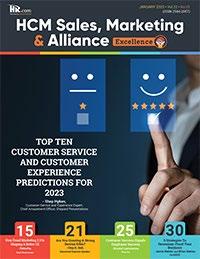

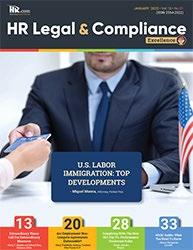
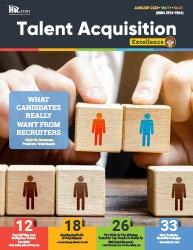



Like to submit an article? Use our online submission form or for more information go to www.hr.com/ExcellencePublications Publications 13 Targeted Publications to Reach Your Audience Informing, Educating, Enlightening and Assisting HR professionals in their personal and professional development, the Excellence series offers high-quality content through the publications!

For more information: Phone: 1.877.472.6648 | Email: ePubeditors@hr.com | www.HR.com/epubs Employee Learning & Development Excellence March 2022
 - Jamie Broughton, CEO, Avenue Careers
- Jamie Broughton, CEO, Avenue Careers






 - Jason Richmond, CEO and Chief Culture Officer,
- Jason Richmond, CEO and Chief Culture Officer,


 - Weronika Niemczyk, Chief People Officer, ABBYY
- Weronika Niemczyk, Chief People Officer, ABBYY



















 Dave Ulrich
Rensis Likert Professor, Ross School of Business, University of Michigan Partner, The RBL Group
Julie Winkle Giulioni
Author, Virtual /Live Keynote Presenter, Inc.’s Top 100 Leadership Speakers
Dr. Beverly Kaye CEO, BevKaye&Co.
Dave Ulrich
Rensis Likert Professor, Ross School of Business, University of Michigan Partner, The RBL Group
Julie Winkle Giulioni
Author, Virtual /Live Keynote Presenter, Inc.’s Top 100 Leadership Speakers
Dr. Beverly Kaye CEO, BevKaye&Co.















 Lilian Chen, Co-Founder and Chief Operating Officer, Bar None Games
Lilian Chen, Co-Founder and Chief Operating Officer, Bar None Games

 Tawanda Johnson, HR and DEI Consultant, Sporting Smiles
Tawanda Johnson, HR and DEI Consultant, Sporting Smiles
















































































